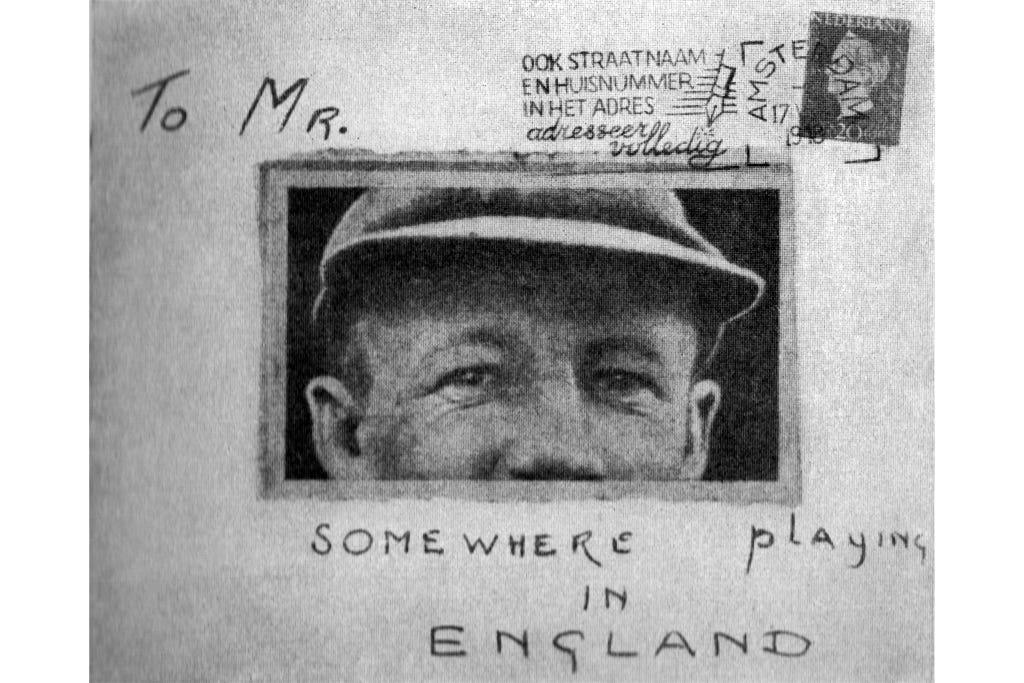
Famous people most of the time are hiding from the rest of us – unless they’re appearing on a screen.
But sometimes, only sometimes, they just can’t avoid us … we have our ways.
As a writer, I learned that you don’t have to interview a famous person to find out a hell-of-a-lot about the real them.
You just need to observe them, or, even better, read a book they’ve written: a book often telling much more about the author than the topic. Thus, that old saying: “Oh that mine enemy should write a book.”
It would not be an exaggeration to say that the most famous person in Australia in my lifetime was a cricketer by name of Don Bradman.
Even though Bradman died in 2001 he’s still today the most celebrated Australian.
So famed, that the Australian Broadcasting Corporation (our public broadcaster) uses Don Bradman’s Test cricket batting average (international matches) as its Post Office Box number.
I shouldn’t have to tell you what it is – because every fair dinkum Australian already knows that Don Bradman averaged 99.94 runs per innings.
Any Australian who doesn’t know Bradman’s Test average is immediately suspected of being a spy.
Cricket nations play what they call “Test Matches” against each other, and the scores are laboriously added and divided around the world … and kept forevermore.
Any average over 50 for a batsman is considered miraculous – yet that is half of what Bradman averaged in his 20-year-long First-Class career. Which is why he was said to be worth three other batsmen to Australia.
Had Bradman scored just four runs in his final innings in England at The Oval in 1948 – when he was 39 (old for a cricketer) – his average would have been exactly 100.
Instead, he was out for a duck (no runs) ... and, it may be apocryphal, but opposition cricketers said Bradman got out because he had tears in his eyes after the magnificent reception he received from the packed crowd.
During his career Bradman had scored so many runs against England that when he was dismissed during a Test at Lords in London, the afternoon newspaper posters that day contained only two words:
HE’S OUT!
People around the world still today outbid one another to collect Bradman’s cricket bats, his letters, photographs of him – and even the old, battered cricket caps he wore on the field.
One of Bradman’s “baggy green” cricket caps sold just the other day for $400,000.
Having heard about Bradman all my life – but being just too young to have seen him bat – I wrote to Sir Don when he was 72 (to his home in Adelaide on 7 January 1981) asking for an interview.
Even though I knew “The Don” was so famous that he didn’t give anyone interviews.
No doubt Bradman received hundreds of such requests every year from around the world, but I felt I had the big advantage of being able to start: “Dear Sir Donald, this is my second letter to you in 25 years.
“The last time I wrote as a 14-year-old boy complaining about [my boyhood Brisbane hero] Ken “Slasher” Mackay being left out of the Australian cricket team to tour South Africa in the 1950s.” [Bradman was chairman of selectors.]
And I just happened to mention to Sir Donald that I had written an article on “Slasher” following his recent heart attack.
This news about Slasher must have struck a chord, as I’d hoped it would.
Don Bradman wrote back almost immediately a full-page letter in his own hand using a fountain pen.
“I do hope Slasher is OK,” Bradman continued. “Interesting character who had no enemies (that I know of) and he deserves the good things of life.”
However, The Don said he could not “accede to your request” for an interview: “After more than 50 years in the spotlight, am anxious that I can enjoy some of the peace and quiet which has been denied me in all that time.”
He signed off: “With best wishes, yours sincerely, Don Bradman”.
He had batted me away neatly. But I was also a cricketer, so I didn’t give myself out and walk.
I knew there were other ways. So I headed for the Queensland State Library and found, surprisingly, that Bradman had written no fewer than four books on cricket.
We hide information in books, and between these covers was the real Don Bradman … a man famous beyond belief, yet who could be deeply hurt by some slight, annoying criticism.
I wrote a 4,250-word article on Bradman in February 1981: “Those who labelled Bradman ‘the greatest’ were really damning him with faint praise ... The most lauded man in Australian history – yet a man who learned to hate that very press.”
A man of whom one writer said: “He did not mean to be just one of the stars, but the sun itself.”
Six years later, in November 1986, when I found myself sitting next to another world-famous Australian cricketer on a plane for five hours in First Class, I didn’t ask him for an interview ... even though we’d both been sent to Perth to write about the Test cricket match against England.
Despite the enormity of the temptation, I didn’t even speak to him.
At all.
Not a word.
And, being a celebrity, he didn’t speak to me either.
Truth is, he was too busy trying to hide from people — including the pilot — who gravitated towards him.
This was another Australian captain, another famed batsman, another Adelaide person … a man of whom Australians always said: “If you want someone to bat for your life, get Ian Chappell.”
Chappell was by this time retired from playing, but on TV and in newspapers he gave his all-knowing cricket opinions throughout every summer – and he never held back.
Even on the field Chappelli, as he was nicknamed, did things his way – once dropping his trousers on the pitch in full view of spectators to adjust his under-garments.
He said defiantly that he didn’t understand what the fuss was about.
Getting to know him was easy as we sat next to each other, elbows almost touching, eating lunch and both making notes. He was clearly writing a cricket column, whereas my scribbles recorded what he looked like close-up.
What he ate and drank; what he did with his time; how he spoke to people.
I kept those notes in a suspended file in my home office for the next four decades.
Then, two years ago when I started writing on substack, I dragged those notes out and wrote one of my first substack stories: you can read it on my site any time by clicking here: Lunch with Ian Chappell.
You can read my Bradman story by clicking here: Our Don Bradman: The price of fame
I will post my article on Ken “Slasher” Mackay soon — so you will learn why I was a fan.


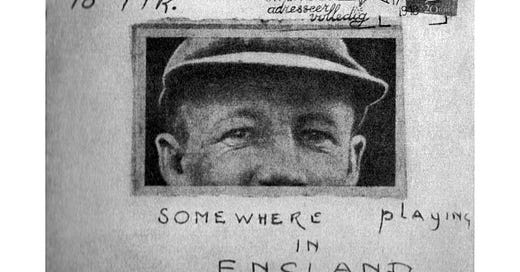


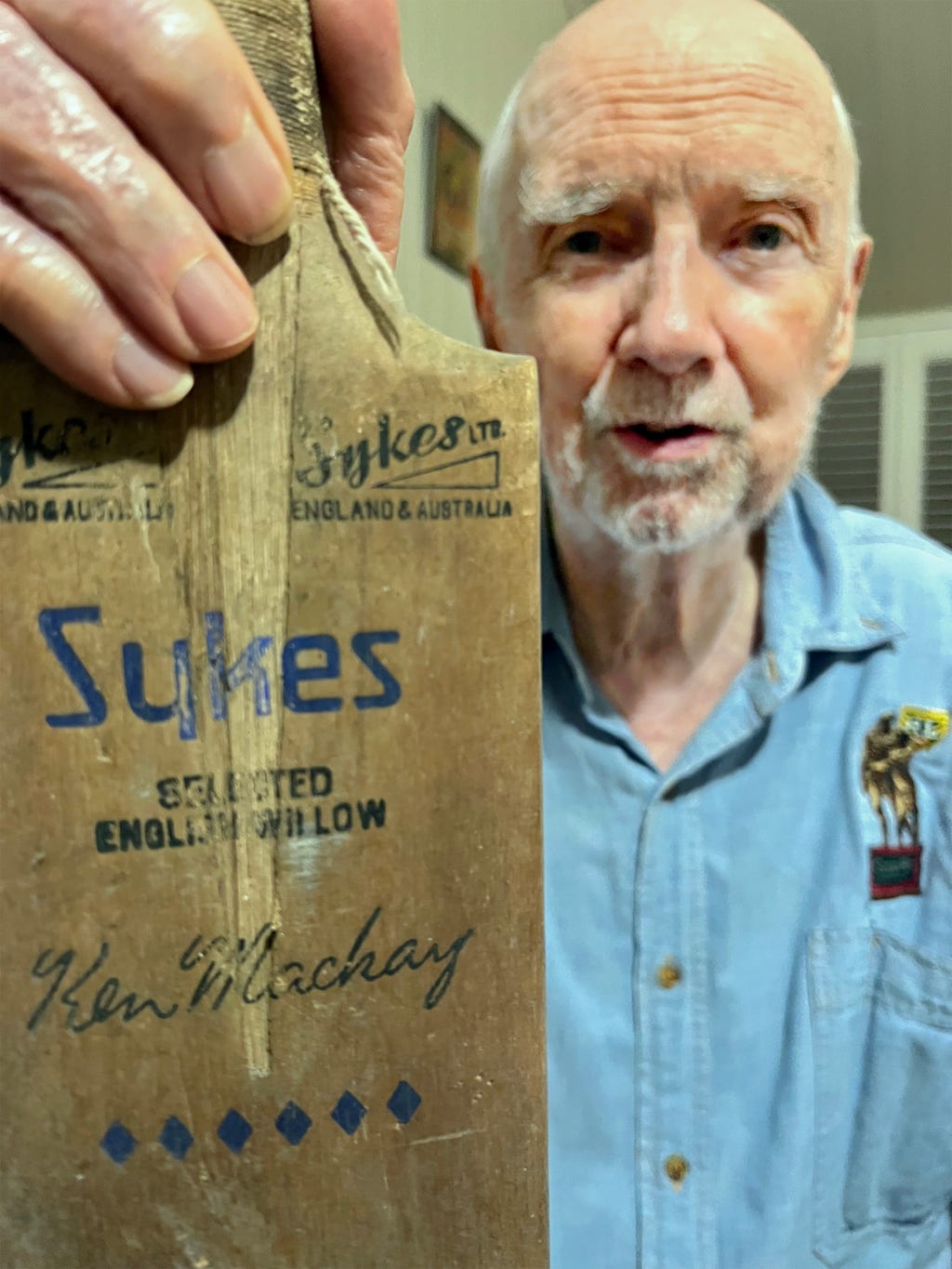
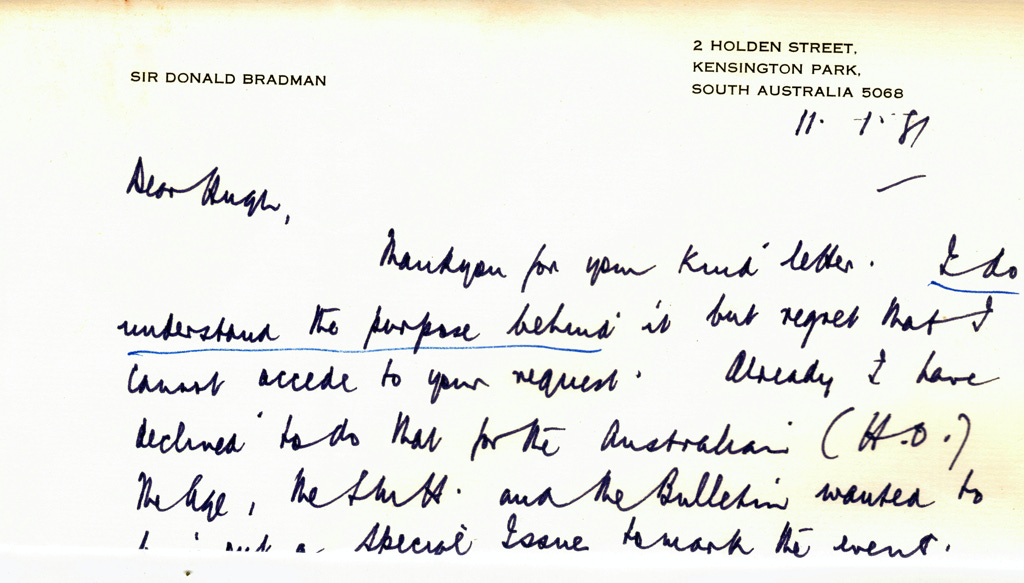
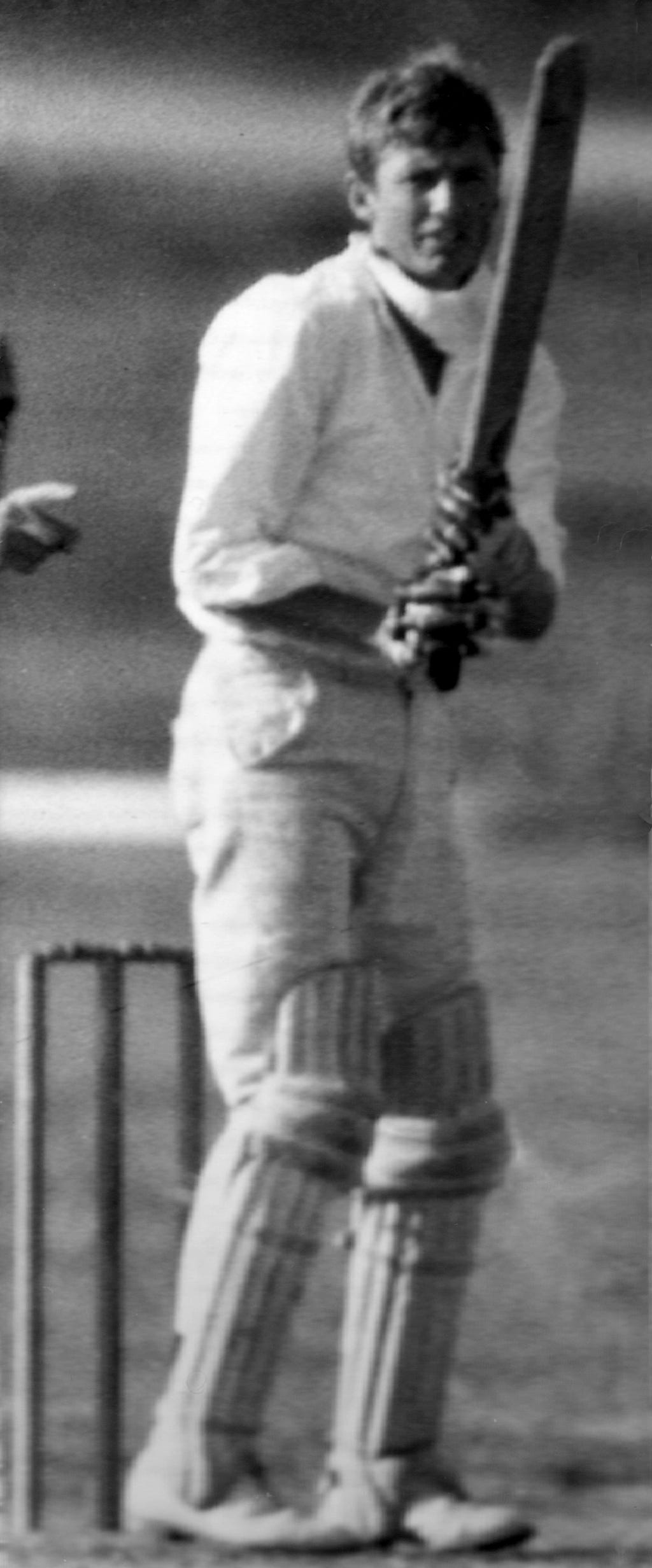
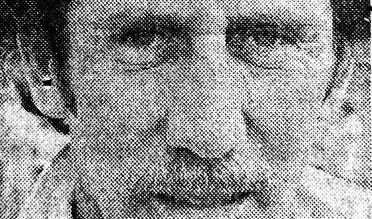
And what a beautiful spot that is, Peter. Thankyou for telling us all.
Merry Christmas Hugh and Helen